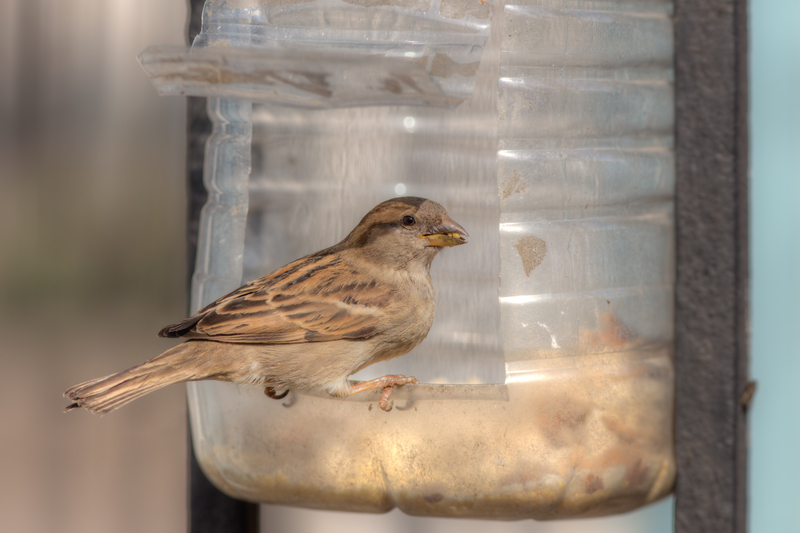Proactive Living: Why Eliminating Damaging Plastics Should Be Your Priority
Are you seeking a healthier, greener, and more proactive lifestyle? If yes, it's time to examine the role that toxic plastics play in your daily life. Plastics are everywhere--from the water bottles in your fridge to the packaging encasing almost every consumer product. While the convenience is undeniable, the hidden risks to your health and the environment make eliminating damaging plastics a critical step for anyone pursuing proactive living.
In this comprehensive guide, we'll explore the urgent reasons for cutting out harmful plastics and offer actionable tips to help you lead a more sustainable and proactive life, starting now. Let's unravel the true impact of plastics and discover practical ways to thrive without them.

Understanding Damaging Plastics: What Are They and Why Are They Harmful?
Plastics come in many forms, but not all plastics are created equal. Some, especially single-use and chemically-laden varieties, pose significant threats to both personal health and the planet.
Types of Damaging Plastics You Should Eliminate Immediately
- Polyvinyl Chloride (PVC): Used in pipes, toys, and packaging; contains dangerous additives.
- Polystyrene (PS): Commonly found in food containers and disposable cutlery; leaches toxins.
- Polyethylene Terephthalate (PET or PETE): Ubiquitous in water and soda bottles; can degrade into microplastics.
- Low- and High-Density Polyethylene (LDPE and HDPE): Used in bags, wraps, and some bottles; major pollutants when not recycled.
- BPA-Containing Plastics: Bisphenol-A is a notorious endocrine disruptor, present in many food and drink containers.
These plastics may seem harmless, but they release chemicals--some potentially cancerous or disruptive to hormone function--into food, drinks, and even the air.
Why These Plastics Are So Damaging
- Toxic Leaching: Many plastics, especially when heated or degraded, leach toxins into consumables.
- Environmental Persistence: Plastics do not biodegrade--they break down into microplastics, polluting soil, air, and water for centuries.
- Wildlife Harm: Animals ingest plastics, leading to choking, starvation, poisoning, and even death.
- Human Health Risks: Chemicals such as phthalates and BPA are linked to hormonal imbalances, reproductive issues, and chronic diseases.
Proactive Living and Plastic-Free Choices: A Healthier Path Forward
Proactive living is about anticipating potential risks and taking deliberate steps to improve your quality of life and the planet's well-being. Eliminating damaging plastics from your routine is one of the most effective ways to embrace a sustainable, conscious lifestyle.
The Health Benefits of Going Plastic-Free
- Reduces exposure to toxic chemicals: Less plastic means fewer hormone disruptors and carcinogens in your everyday environment.
- Protects vulnerable populations: Children and pregnant women are especially susceptible to plastic-related toxins.
- Improves food safety: Storing food in glass or stainless steel keeps it fresher and uncontaminated.
Environmental Advantages of Proactively Eliminating Damaging Plastics
- Prevents plastic pollution: Every piece of plastic you refuse, reuse, or replace is a win for ecosystems & wildlife.
- Supports planetary health: Less demand for plastic drives innovation in sustainable packaging and alternatives.
- Reduces waste management issues: Plastics are notoriously hard to recycle and often end up in landfills or oceans.
Step-by-Step Strategy: How You Can Eliminate Damaging Plastics Now
Making the switch to a plastic-free, proactive lifestyle might sound daunting. But with the right approach, you can protect your family, improve your health, and help the environment. Let's break it down step by step.
1. Identify and Avoid the Most Damaging Plastics
Start by learning to recognize hazardous plastic types:- Check recycling codes. Avoid products with codes #3 (PVC), #6 (PS), and avoid those labeled "BPA".
- Say NO to single-use plastics, including straws, cutlery, stirrers, and disposable cups.
- Switch from plastic water bottles to reusable alternatives such as stainless steel or glass.
Tip: Download apps or check guides that identify plastic types if you're unsure what to avoid!
2. Replace Plastics with Safe, Eco-Friendly Alternatives
There are abundant sustainable and health-conscious options available:
- Glass: Use glass jars and containers for food storage and leftovers.
- Stainless steel: Ideal for water bottles, lunchboxes, and reusable straws.
- Bamboo: Durable, natural option for toothbrushes, utensils, and plates.
- Cloth bags: Replace plastic grocery and produce bags with washable fabric alternatives.
- Beeswax wraps: Substitute plastic wrap with reusable, biodegradable wraps for covering food.
3. Rethink Shopping Habits and Reduce Plastic Packaging
- Buy in bulk to cut down on packaging waste--choose stores that allow you to bring your own containers.
- Support brands that use sustainable, compostable, or recyclable packaging.
- Opt for farmers' markets and direct-from-farm purchases, where food often comes unpackaged.
4. Eliminate Plastics from Personal Care Routine
- Choose bar soap, shampoo, and conditioner over bottled products.
- Use bamboo or wooden toothbrushes and cloth face pads instead of disposable ones.
- Say no to products containing microbeads and single-use packaging.
5. Promote Proactive Living in Your Workplace and Community
- Encourage zero-waste policies at work--bring your own coffee mug and lunch kit.
- Organize plastic-free challenges or community clean-ups.
- Share tips and resources to empower others to reduce their plastic footprint.
Addressing Common Challenges: Overcoming Barriers to a Plastic-Free Life
Everyone faces obstacles on the journey toward proactive, plastic-free living. Here's how to handle the most common setbacks:
Convenience and Habit
- Plan ahead: Keep a reusable kit (bags, bottles, cutlery) in your car or bag.
- Start small: Replace one item at a time--over months, small changes make a big impact.
Access and Cost
- Choose multipurpose items: Invest once in high-quality reusable goods that last.
- DIY when possible: Make your own cleaning products and snacks using simple, package-free ingredients.
Social & Cultural Resistance
- Educate friends and family: Share the health and environmental risks of plastics with them.
- Lead by example: Your actions can inspire positive change in others.
Long-Term Benefits: The Ripple Effects of Eliminating Damaging Plastics
Going plastic-free isn't just good for you--it's essential for global well-being. Here's how your choices make a bigger difference:
1. Safeguarding Health for Future Generations
Every step you take protects children from exposure to toxins, supports proper development, and reduces the risk of chronic diseases. Healthy families build healthy communities.
2. Cleaning Up Our Oceans and Natural Landscapes
Microplastics contaminate oceans, rivers, and soil. Your effort to avoid damaging plastics prevents more waste from entering fragile ecosystems, safeguarding marine life and biodiversity.
3. Building Stronger, More Resilient Local Economies
When you buy from plastic-free vendors and local farmers, you support businesses that prioritize sustainability. This strengthens the market for eco-friendly alternatives and drives job growth in the green sector.

Frequently Asked Questions (FAQ) About Eliminating Damaging Plastics
Why is proactive living important when it comes to plastics?
Proactive living empowers you to anticipate health and environmental threats--like those from damaging plastics--before they escalate. By choosing plastic-free living, you avoid preventable harm and invest in your own well-being and the planet's future.
Is it possible to go entirely plastic-free?
While it may be tough to eliminate every single plastic right away, significant reduction is both realistic and impactful. Focus on removing the most harmful plastics first and continually update your habits as more sustainable innovations become available.
How can I tell if a plastic is damaging?
Check the recycling number (often stamped on the bottom): #3 (PVC), #6 (PS), and plastics with BPA are the worst offenders. Also, if the item is designed for single-use or is especially flimsy, it's likely a candidate for elimination.
What are some easy swaps to get started?
- Reusable water bottle: Ditch bottled water for a stainless steel or glass option.
- Cloth shopping bags: Keep them in your purse or car for every errand.
- Bar soap: Simple, package-free, lasts longer than liquid varieties in plastic bottles.
- Glass or stainless lunchboxes: Healthier, sturdier alternatives to plastic containers.
Final Thoughts: Embrace Proactive Living--Eliminate Damaging Plastics Now
Why wait to take control of your health and help heal the planet? With every damaging plastic you remove from your life, you take a significant step toward a brighter, cleaner, and healthier future--both for yourself and generations to come.
Remember, proactive living is not about perfection, but about making consistent, conscious improvements--starting with those items that do the greatest harm. By prioritizing the elimination of damaging plastics, you set yourself on a proactive path toward wellness, empowerment, and sustainability.
- Educate yourself and others about the dangers of harmful plastics.
- Choose eco-friendly, reusable alternatives whenever possible.
- Advocate for systemic changes in your community and workplace.
- Celebrate your progress and keep striving for a plastic-free lifestyle.
The movement starts with you. Be proactive. Eliminate damaging plastics now.